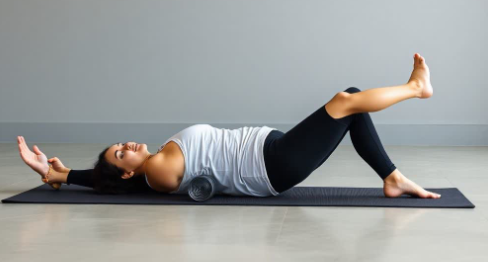What Should Be a Fitness Goal?
Meaningful Targets for Your Wellness Journey
Setting the right fitness goals can be the difference between lasting success and frustrating failure on your wellness journey. Whether you're just beginning your fitness adventure or looking to revitalize a stagnant routine, understanding how to establish meaningful, achievable goals is essential. This comprehensive guide explores the art and science of fitness goal-setting, helping you create objectives that motivate, challenge, and transform.
Beyond the Scale: Rethinking Traditional Fitness Goals
For decades, weight loss dominated fitness goal-setting. While maintaining a healthy weight remains important, the wellness community increasingly recognizes that fixating solely on pounds or kilograms can be counterproductive. Modern approaches to fitness goals encompass broader aspects of physical and mental well-being:
Performance-Based Goals
Performance metrics offer concrete, measurable targets that focus on what your body can do rather than just how it looks:
Running a specific distance without stopping
Lifting a target weight for a particular exercise
Completing a certain number of repetitions
Achieving a new personal record in your chosen activity
Mastering a specific skill or movement pattern
Performance goals shift attention toward functional improvement, celebrating achievement through action rather than appearance alone.
Performance metrics offer concrete, measurable targets that focus on what your body can do rather than just how it looks:
Running a specific distance without stopping
Lifting a target weight for a particular exercise
Completing a certain number of repetitions
Achieving a new personal record in your chosen activity
Mastering a specific skill or movement pattern
Performance goals shift attention toward functional improvement, celebrating achievement through action rather than appearance alone.
Consistency-Based Goals
Sometimes the most powerful fitness goals involve showing up:
Sometimes the most powerful fitness goals involve showing up:
✔ Exercising a specific number of days per week
✔ Maintaining a minimum activity level daily
✔ Following a program for its entire duration
✔ Establishing morning movement routines
✔ Creating sustainable exercise habits that integrate seamlessly into daily life
Consistency goals acknowledge that fitness is a lifelong journey, not a quick fix. They build the foundation for lasting change by prioritizing the process over immediate results.
✔ Maintaining a minimum activity level daily
✔ Following a program for its entire duration
✔ Establishing morning movement routines
✔ Creating sustainable exercise habits that integrate seamlessly into daily life
Consistency goals acknowledge that fitness is a lifelong journey, not a quick fix. They build the foundation for lasting change by prioritizing the process over immediate results.
The SMART Framework for Effective Fitness Goals
The time-tested SMART framework provides a structured approach to goal-setting that increases your chances of success:
Specific: Vague aspirations like "get in shape" lack clarity. Instead, define precisely what you want to accomplish. For example: "Increase my bench press by 15 pounds" or "Lower my 5K time by 3 minutes."
Measurable: Your goals should include concrete metrics to track progress. Whether minutes, repetitions, pounds, or percentages, measurable goals provide clear feedback on your journey.
Achievable: While ambitious goals can inspire, unrealistic ones lead to discouragement. A beginner aiming to run a marathon next month sets themselves up for injury and disappointment. Challenge yourself within the bounds of reality.
Relevant: Your fitness goals should align with your broader life priorities, values, and circumstances. A busy parent might prioritize efficient, home-based workouts, while someone recovering from injury might focus on rehabilitation exercises.
Time-bound: Open-ended goals lack urgency. Establish specific timeframes of weeks, months, or a full year to create momentum and enable proper planning.
Holistic Fitness: Beyond Physical Performance
Contemporary approaches to fitness recognize the mind-body connection, embracing goals that enhance overall well-being:
Mental Health Goals
✔ Reducing stress through regular physical activity
✔ Using exercise to manage anxiety or depression symptoms
✔ Improving focus and cognitive performance
✔ Enhancing mood stability through consistent movement
✔ Building exercise-based mindfulness practices
✔ Using exercise to manage anxiety or depression symptoms
✔ Improving focus and cognitive performance
✔ Enhancing mood stability through consistent movement
✔ Building exercise-based mindfulness practices
Recovery-Focused Goals
✔ Improving sleep quality and duration
✔ Developing effective post-workout recovery routines
✔ Achieving a better work-life-fitness balance
✔ Reducing chronic pain through appropriate movement
✔ Enhancing mobility and reducing stiffness
✔ Developing effective post-workout recovery routines
✔ Achieving a better work-life-fitness balance
✔ Reducing chronic pain through appropriate movement
✔ Enhancing mobility and reducing stiffness
Personalized Goal-Setting: Finding Your "Why"
The most powerful fitness goals connect deeply to personal values and motivations. Research in behavioral psychology shows that extrinsic motivators (looking good for others) generally produce less sustainable results than intrinsic ones (feeling strong, capable, or energized).
Ask yourself:
✔ How do I want to feel in my body?
✔ What activities bring me joy in movement?
✔ What health concerns am I addressing through fitness?
✔ How will improved fitness enhance my daily life?
✔ What physical capabilities would make me proud?
Your answers reveal what truly matters to you, helping you formulate goals with lasting motivational power.
Evolving Goals: The Importance of Reassessment
Effective fitness goals aren't static. As you progress, your objectives should evolve to reflect new capabilities, changing circumstances, and shifting priorities. Consider establishing:
Milestone reviews: Scheduled check-ins every 4-8 weeks to assess progress
Celebration points: Acknowledging achievements before setting new challenges
Adjustment protocols: Guidelines for modifying goals when necessary (due to injury, life changes, or unexpected progress)
Progressive challenges: Building upon completed goals rather than abandoning them
This dynamic approach prevents stagnation while honoring the journey you've already undertaken.
Celebration points: Acknowledging achievements before setting new challenges
Adjustment protocols: Guidelines for modifying goals when necessary (due to injury, life changes, or unexpected progress)
Progressive challenges: Building upon completed goals rather than abandoning them
This dynamic approach prevents stagnation while honoring the journey you've already undertaken.
Creating Your Personal Fitness Goal Hierarchy
A well-structured approach to fitness goals involves creating a hierarchy:
Long-term vision (1-5 years): Your ultimate aspiration
Annual goals: Major milestones for the year
Quarterly objectives: Medium-term targets that build toward annual goals
Monthly focuses: Specific areas of improvement for 30-day periods
Weekly aims: Process-oriented actions within your control
Daily practices: Habits that accumulate toward larger goals
This nested approach connects your daily actions to your grandest aspirations, providing both immediate direction and long-term purpose.
Annual goals: Major milestones for the year
Quarterly objectives: Medium-term targets that build toward annual goals
Monthly focuses: Specific areas of improvement for 30-day periods
Weekly aims: Process-oriented actions within your control
Daily practices: Habits that accumulate toward larger goals
This nested approach connects your daily actions to your grandest aspirations, providing both immediate direction and long-term purpose.
Conclusion: The Journey of a Thousand Miles
The ancient wisdom that "a journey of a thousand miles begins with a single step" perfectly encapsulates fitness goal-setting. The most transformative fitness journeys start not with dramatic changes but with thoughtful, intentional goal-setting followed by consistent action.
Your ideal fitness goals will be as unique as you are, reflecting your body, preferences, lifestyle, and dreams. By crafting objectives that are specific yet flexible, challenging yet achievable, you create a roadmap for success that transcends quick fixes and fad approaches.
Remember that the ultimate measure of a fitness goal isn't just whether you achieve it, but how it enhances your relationship with your body and your overall quality of life. When approached thoughtfully, fitness goals become not just targets to hit but gateways to a more vibrant, capable, and confident version of yourself.






0 Comments:
Post a Comment
If you have any doubt, please let me know
Subscribe to Post Comments [Atom]
<< Home